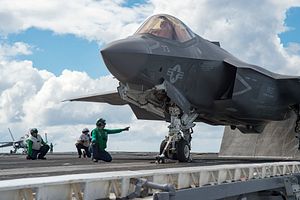A recent report in the New York Times detailed the many connections between U.S. technology firms and their Chinese counterparts. The report suggested that many of the companies that U.S. firms regularly deal with have their own relationships with the Chinese military.
The articles, inspired by a report from the intelligence firm Blue Heron on IBM’s dealings with China, highlight the tensions between maintaining security over American dual-use technological innovations and staying abreast of the global technology market. While the report does not indicate that IBM has violated the U.S. system of export control, it does imply that the system lacks capacity to properly monitor interactions between U.S. and Chinese companies.
For all that the United States has harped upon the threat of cyber-espionage, there is good reason to believe that the Chinese military has acquired more critical technology through above-board, legitimate economic deals than through direct theft of intellectual property. It’s not clear that most American firms are cognizant of, or willing to comply with, the export controls that the U.S. government hopes will manage their relations with Chinese companies.
Why does this matter? The Third Offset depends on harnessing the innovative nature of the U.S. tech economy to stay ahead of the Chinese defense industry. This effort further depends on the capacity of the U.S. defense industry to integrate dual use technology into the U.S. military machine. While the U.S. defense industry continues to enjoy key advantages over its Chinese and Russian counterparts in management and systems integration, the regular transfer of advanced technology cannot help but to narrow the gap.
The problem goes to the very core of U.S. foreign policy towards China. On the one hand, U.S. companies (and their supporters within Congress and the bureaucracy) seek to develop relationships with their Chinese counterparts in order to enter new markets, take advantage of Chinese labor and resources, and increase profits at home and abroad. Built on this foundation, the economic relationship between the United States and China has become the chief dynamic in the Asia-Pacific, and in the world as a whole. Moreover, the financial aspects of this relationship have become central to the functioning of the world economy.
On the other hand, the United States government views the Chinese military as a growing threat to American global power, and especially to U.S. freedom of action in the Western Pacific. Most of official Washington sees the increasing size and sophistication of the People’s Liberation Army as the key emerging threat of the next several decades.
For quite some time, these understandings have existed alongside one another, colliding more in theory than in practice. Today, it is becoming clearer that navigating between economic and national security concerns will grow increasingly difficult for U.S. companies and policymakers.

































